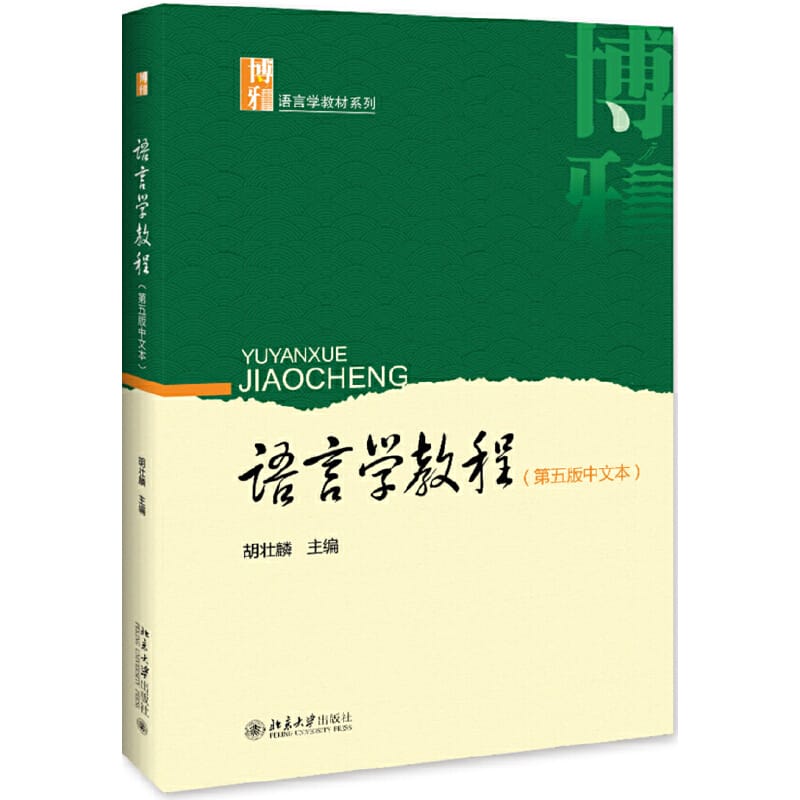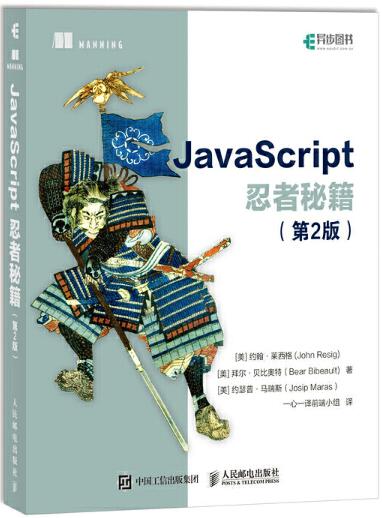汉语语法教程:从知识到能力(汉英对照)
¥79.00定价
作者: 徐晶凝
出版时间:2017-05
出版社:北京大学出版社
- 北京大学出版社
- 9787301282588
- 1版
- 103291
- 43180901-1
- 平装
- 16流
- 2017-05
- 489
- 464
- 文学
- 中国语言文学
- H195.4
- 国际汉语
作者简介
内容简介
这是为以汉语作为第二语言的中高级学习者编写的实用语法教材。《汉语语法教程:从知识到能力(汉英对照)》打破了理论语法的框架,从帮助学习者了解汉语句子的基本结构、提高语法能力的角度出发,安排相关的语言项目,共20讲,分为上、下两编。上编12讲主要讲述与句子主要成分相关的语法,下编8讲主要讲述时体、情态范畴的语法。每讲都依据知识点的内在逻辑进行了分解处理,层层递进,中英文对照,并辅以大量活泼有趣的针对性练习。该教材力求引导学习者自我发现语法规律,在有意义的交际语境中关注语法形式。
同时,这也是一本语法教学的参考书,凝聚了编者十多年的语法教学积累。年轻的新手教师和汉语国际教育专业的研究生可以从中了解汉语作为第二语言教学的基本语法项目的相关教学知识,感受完整的语法教学设计和教学方法,了解学习者语法学习的常见偏误。通过扫描书里的二维码,更能直观地看到编者的语法教学实况视频和教案,理解本书独特的编写理念,轻松上手汉语作为第二语言的语法教学。
同时,这也是一本语法教学的参考书,凝聚了编者十多年的语法教学积累。年轻的新手教师和汉语国际教育专业的研究生可以从中了解汉语作为第二语言教学的基本语法项目的相关教学知识,感受完整的语法教学设计和教学方法,了解学习者语法学习的常见偏误。通过扫描书里的二维码,更能直观地看到编者的语法教学实况视频和教案,理解本书独特的编写理念,轻松上手汉语作为第二语言的语法教学。
目录
目录Contents
引言Introduction / 1
上编 Part One
**讲 汉语语法的特点
The Distinguishing Features of Chinese Grammar 4
1.1 汉语语法的特点一
The first distinguishing feature of Chinese grammar / 4
1.2 汉语语法的特点二
The second distinguishing feature of Chinese grammar / 6
1.3 汉语语法的特点三
The third distinguishing feature of Chinese grammar / 7
1.4 句子结构与“的、地、得” Sentence structure and “的, 地, 得” / 9
第二讲 时点词与时量词 Time Words 18
2.1 时点词Time-when words / 19
2.2 时量词 Time-duration words / 21
2.3 几组时间词的用法 Usage of several groups of time words / 29
第三讲 方位词与处所表达
Nouns of Locality and Expressing Place 40
3.1 方位词 Nouns of locality / 42
3.2 用不用方位词“里”或“上”
Can nouns of locality “里” or “上” be used / 45
3.3 “在、是、有”与存在句 “在,是,有” and existential sentences / 49
3.4 在……上、在……中、在……下 / 50
第四讲 离合词 Verb-Object Compounds 57
4.1 离合词引进宾语的办法 V-O compounds and their “objects” / 58
4.2 离合词的用法 Usage of verb-object compounds / 61
第五讲 结果补语 Resultative Complements 65
5.1 结果补语的形式 The form of resultative complements / 66
5.2 结果补语的意义 The meaning of resultative complements / 69
5.3 专用结果补语 Special resultative complements / 71
5.4 结果补语的用法 Usage of resultative complements / 80
第六讲 趋向补语 Directional Complements 86
6.1 趋向补语的类型 Types of directional complements / 88
6.2 趋向补语的用法 Usage of directional complements / 91
第七讲 可能补语 Potential Complements 103
7.1 可能补语的形式 The form of potential complements / 104
7.2 专用可能补语 Special potential complements / 105
7.3 可能补语与“ (不)能”
Potential complements and “ (不)能” / 108
第八讲 状态补语 Predicative Complements 112
8.1 状态补语 V得AP / 113
8.2 状态补语 V得VP / 118
8.3 状态补语 A得 VP / 120
8.4 状态补语的用法 Usage of predicative complements / 121
8.5 状态补语与可能补语
Predicative complements and potential complements / 124
8.6 补语总结 Summary of complements / 126
第九讲 “把”字句 把-Sentences 132
9.1 句子的信息安排与“把”字句
The ordering of information and 把-sentences / 132
9.2 关于“把”字句的注意事项
Special considerations concerning 把-sentences / 136
9.3 几种主要的“把”字句
Several primary types of 把-sentences / 137
第十讲 被动句 Passive Sentences 153
10.1 “被”字句 被-sentences / 153
10.2 主要的“被”字句句型
The primary sentence patterns of 被-sentences / 157
10.3 其他的被动句 Other passive sentence patterns / 159
第十一讲 定语 Attributives 165
11.1 领属关系NP中,名词性定语与“的”
Attributive noun and “的” in relative nominal phrases / 166
11.2 属性关系NP中,名词性定语与“的”
Attributive noun and “的”in NP of attribution relations / 167
11.3 时间词、处所词、方位词与“的”
Time words, place words, nouns of locality and “的” / 168
11.4 形容词性定语与“的” Adjectival attributives and “的” / 169
11.5 动词性定语与“的” Verbal attributives and “的” / 172
11.6 介词短语定语与“的”
Prepositional phrase attributives and “的” / 174
11.7 数量词定语与“的”Numeral-classifier attributives and “的” / 174
11.8 多项定语 Multiple attributives / 182
第十二讲 状语 Adverbials 196
12.1 状语的类型 Types of adverbials / 196
12.2 介词短语状语与“地”
Prepositional phrase adverbials and “地” / 198
12.3 形容词状语与“地” Adjectival adverbials and “地” / 199
12.4 数量词状语与“地”
Numeral-classifier adverbials and “地” / 203
12.5 副词状语与“地” Adverb as adverbial and “地” / 205
12.6 多项状语的顺序 Word order of multiple adverbials / 206
12.7 状语与补语 Adverbials and complements / 209
第十三讲 要 会 将 220
13.1 要 / 221
13.2 会 / 225
13.3 将 / 227
13.4 S + [未来时点词] + VP / 230
第十四讲 在 正 呢 235
14.1 S +在+ place + V +(O) / 236
14.2 S +正在+ V(+ O) / 237
14.3 S +一直在+ V(+ O) / 239
14.4 S +总在+ V(+ O) / 240
14.5 S +(正/一直/总)在+ V +(O)+呢 / 241
第十五讲 着 244
15.1 “在”与“着” / 244
15.2 (正) V1着(O)+ V2(O) / 247
15.3 “ (正)急着+ V”与“ (正/在)忙着+ V” / 249
15.4 S +(正)在+ place + V1着(O)+ V2(O)
S + V1在+ place + V2(O) / 250
15.5 处所+ V着+ O / 251
15.6 V1着V1着+ V2 / 254
15.7 V着 / 256
15.8“着”与“呢” / 257
第十六讲 了 265
16.1 “了1”和“了2”的意义
The meaning of “了1”and“了2” / 266
16.2“了2”的意义和用法 The meaning and usage of “了2” / 269
16.3“了1”的意义和用法 The meaning and usage of “了1” / 275
16.4 叙事语篇里的“了2”与“了1”
“了2” and “了1”in narrative discourse / 277
16.5 “了1”的注意事项
Special considerations concerning “了1” / 284
第十七讲 过 来着 是……的 不 没 291
17.1 过 / 291
17.2 来着 / 295
17.3 是……的 / 296
17.4“没”与“不” / 299
第十八讲 V起来 V下去 307
18.1 V起来 / 307
18.2 V下去 / 310
第十九讲 动词重叠 Verb Reduplications 317
19.1动词重叠的形式The form of verb reduplication / 317
19.2 动词重叠的意义 The meaning of reduplication verbs / 318
19.3 动词重叠的用法 Usage of reduplication verbs / 319
第二十讲 语气助词 Modal Particles 329
20.1 疑问句与“吗、呢、吧、啊”
Interrogative sentences and “吗, 呢, 吧, 啊” / 330
20.2感叹句与“啊”Exclamatory sentences and “啊” / 338
20.3 祈使句与“吧、啊、嘛、呗”
Imperative sentences and “吧, 啊, 嘛, 呗” / 342
20.4 陈述句与“呢、吧、啊、嘛、呗”
Declarative sentences and “呢, 吧, 啊, 嘛, 呗” / 347
20.5 语气助词用法总结 Summary of modal particle usage / 366
参考答案 Answer Key 374
主要参考文献 Main References 446
致谢 Acknowledgements 448
引言Introduction / 1
上编 Part One
**讲 汉语语法的特点
The Distinguishing Features of Chinese Grammar 4
1.1 汉语语法的特点一
The first distinguishing feature of Chinese grammar / 4
1.2 汉语语法的特点二
The second distinguishing feature of Chinese grammar / 6
1.3 汉语语法的特点三
The third distinguishing feature of Chinese grammar / 7
1.4 句子结构与“的、地、得” Sentence structure and “的, 地, 得” / 9
第二讲 时点词与时量词 Time Words 18
2.1 时点词Time-when words / 19
2.2 时量词 Time-duration words / 21
2.3 几组时间词的用法 Usage of several groups of time words / 29
第三讲 方位词与处所表达
Nouns of Locality and Expressing Place 40
3.1 方位词 Nouns of locality / 42
3.2 用不用方位词“里”或“上”
Can nouns of locality “里” or “上” be used / 45
3.3 “在、是、有”与存在句 “在,是,有” and existential sentences / 49
3.4 在……上、在……中、在……下 / 50
第四讲 离合词 Verb-Object Compounds 57
4.1 离合词引进宾语的办法 V-O compounds and their “objects” / 58
4.2 离合词的用法 Usage of verb-object compounds / 61
第五讲 结果补语 Resultative Complements 65
5.1 结果补语的形式 The form of resultative complements / 66
5.2 结果补语的意义 The meaning of resultative complements / 69
5.3 专用结果补语 Special resultative complements / 71
5.4 结果补语的用法 Usage of resultative complements / 80
第六讲 趋向补语 Directional Complements 86
6.1 趋向补语的类型 Types of directional complements / 88
6.2 趋向补语的用法 Usage of directional complements / 91
第七讲 可能补语 Potential Complements 103
7.1 可能补语的形式 The form of potential complements / 104
7.2 专用可能补语 Special potential complements / 105
7.3 可能补语与“ (不)能”
Potential complements and “ (不)能” / 108
第八讲 状态补语 Predicative Complements 112
8.1 状态补语 V得AP / 113
8.2 状态补语 V得VP / 118
8.3 状态补语 A得 VP / 120
8.4 状态补语的用法 Usage of predicative complements / 121
8.5 状态补语与可能补语
Predicative complements and potential complements / 124
8.6 补语总结 Summary of complements / 126
第九讲 “把”字句 把-Sentences 132
9.1 句子的信息安排与“把”字句
The ordering of information and 把-sentences / 132
9.2 关于“把”字句的注意事项
Special considerations concerning 把-sentences / 136
9.3 几种主要的“把”字句
Several primary types of 把-sentences / 137
第十讲 被动句 Passive Sentences 153
10.1 “被”字句 被-sentences / 153
10.2 主要的“被”字句句型
The primary sentence patterns of 被-sentences / 157
10.3 其他的被动句 Other passive sentence patterns / 159
第十一讲 定语 Attributives 165
11.1 领属关系NP中,名词性定语与“的”
Attributive noun and “的” in relative nominal phrases / 166
11.2 属性关系NP中,名词性定语与“的”
Attributive noun and “的”in NP of attribution relations / 167
11.3 时间词、处所词、方位词与“的”
Time words, place words, nouns of locality and “的” / 168
11.4 形容词性定语与“的” Adjectival attributives and “的” / 169
11.5 动词性定语与“的” Verbal attributives and “的” / 172
11.6 介词短语定语与“的”
Prepositional phrase attributives and “的” / 174
11.7 数量词定语与“的”Numeral-classifier attributives and “的” / 174
11.8 多项定语 Multiple attributives / 182
第十二讲 状语 Adverbials 196
12.1 状语的类型 Types of adverbials / 196
12.2 介词短语状语与“地”
Prepositional phrase adverbials and “地” / 198
12.3 形容词状语与“地” Adjectival adverbials and “地” / 199
12.4 数量词状语与“地”
Numeral-classifier adverbials and “地” / 203
12.5 副词状语与“地” Adverb as adverbial and “地” / 205
12.6 多项状语的顺序 Word order of multiple adverbials / 206
12.7 状语与补语 Adverbials and complements / 209
第十三讲 要 会 将 220
13.1 要 / 221
13.2 会 / 225
13.3 将 / 227
13.4 S + [未来时点词] + VP / 230
第十四讲 在 正 呢 235
14.1 S +在+ place + V +(O) / 236
14.2 S +正在+ V(+ O) / 237
14.3 S +一直在+ V(+ O) / 239
14.4 S +总在+ V(+ O) / 240
14.5 S +(正/一直/总)在+ V +(O)+呢 / 241
第十五讲 着 244
15.1 “在”与“着” / 244
15.2 (正) V1着(O)+ V2(O) / 247
15.3 “ (正)急着+ V”与“ (正/在)忙着+ V” / 249
15.4 S +(正)在+ place + V1着(O)+ V2(O)
S + V1在+ place + V2(O) / 250
15.5 处所+ V着+ O / 251
15.6 V1着V1着+ V2 / 254
15.7 V着 / 256
15.8“着”与“呢” / 257
第十六讲 了 265
16.1 “了1”和“了2”的意义
The meaning of “了1”and“了2” / 266
16.2“了2”的意义和用法 The meaning and usage of “了2” / 269
16.3“了1”的意义和用法 The meaning and usage of “了1” / 275
16.4 叙事语篇里的“了2”与“了1”
“了2” and “了1”in narrative discourse / 277
16.5 “了1”的注意事项
Special considerations concerning “了1” / 284
第十七讲 过 来着 是……的 不 没 291
17.1 过 / 291
17.2 来着 / 295
17.3 是……的 / 296
17.4“没”与“不” / 299
第十八讲 V起来 V下去 307
18.1 V起来 / 307
18.2 V下去 / 310
第十九讲 动词重叠 Verb Reduplications 317
19.1动词重叠的形式The form of verb reduplication / 317
19.2 动词重叠的意义 The meaning of reduplication verbs / 318
19.3 动词重叠的用法 Usage of reduplication verbs / 319
第二十讲 语气助词 Modal Particles 329
20.1 疑问句与“吗、呢、吧、啊”
Interrogative sentences and “吗, 呢, 吧, 啊” / 330
20.2感叹句与“啊”Exclamatory sentences and “啊” / 338
20.3 祈使句与“吧、啊、嘛、呗”
Imperative sentences and “吧, 啊, 嘛, 呗” / 342
20.4 陈述句与“呢、吧、啊、嘛、呗”
Declarative sentences and “呢, 吧, 啊, 嘛, 呗” / 347
20.5 语气助词用法总结 Summary of modal particle usage / 366
参考答案 Answer Key 374
主要参考文献 Main References 446
致谢 Acknowledgements 448







